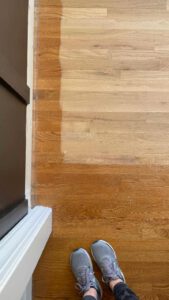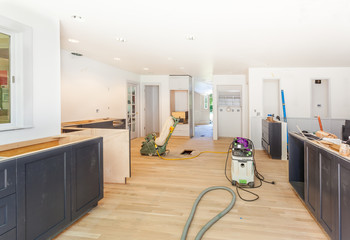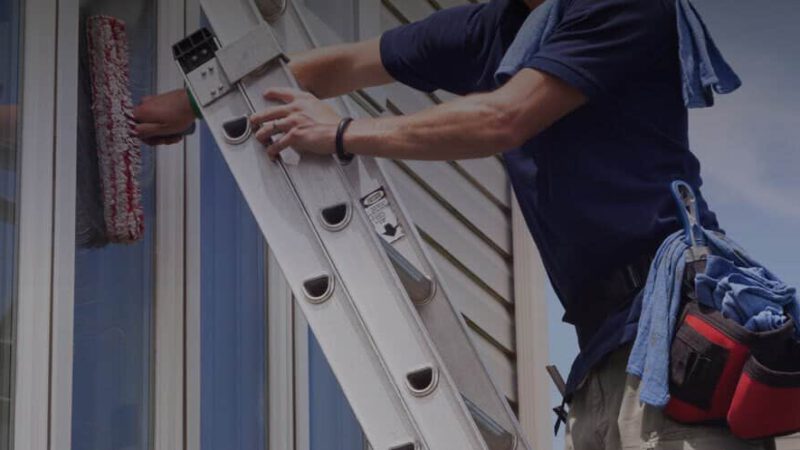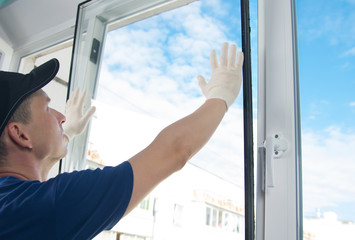Hardwood Floor Refinishing
Hardwood floors look amazing in most homes, but they can lose their luster after years of wear and tear. Hardwood Floor Refinishing NJ is a process that helps reset the hardwood floors and extend their longevity.
Refinishing starts with sanding the wood flooring to remove scratches, dents, and other imperfections. This will usually take two days.

If water stains, scratches, and gouges are making your hardwood floor look tired, it’s time to refinish it. In the past, that meant sanding down to bare wood, a dust-producing and time-consuming process that’s risky for those without experience or expensive if you hire professionals to do it for you.
Now, it can be done more quickly and easily by screening, which removes the top layer of polyurethane while leaving the wood intact. It’s not suitable for all floors, though; it should only be used on a floor that is worn down to the level of the baseboards or below. It’s also not appropriate for floors with significant damage that has penetrated the surface, such as deep gouges and dents.
Before you start sanding, it’s important to prep the room and protect furniture from dust. You’ll want to move everything out of the room, cover outlets and other fixtures with plastic tarps, and tape up moldings to keep the sanding dust from reaching them. You should also make sure that your sanding machine is in good working condition and that it’s matched to the type of sandpaper you’re using. You’ll want to start with a 36 or 40-grit paper, then move on to 60, 80, 100 and 120 grits. After each pass, look over your work and make sure you’ve removed all marks, swirls or scratches.
When you’re done, you’ll need to vacuum the floor to remove all of the dust that has settled there. Next, wipe the entire surface of the floor with a tack cloth, which is a wax-impregnated piece of cheesecloth designed to catch and hold dust residue. Finally, you’ll need to reinstall any baseboards that you had removed before the sanding started.
When you’re ready to apply the new finish, decide whether to use a water-based or oil-based product. Water-based finishes dry faster and are easier to work with, but they can show a little more of the grain than oil-based finishes. You’ll also want to choose a sheen level that suits your preferences. If you’re unsure, ask your contractor for advice. They should be able to provide you with samples so that you can try different options in your home.
Staining a hardwood floor can dramatically change its appearance and give a room a completely new look. It is a time consuming and labor intensive process, but the results are well worth it. It is important to understand what the staining process entails and to avoid certain mistakes that can lead to a poor finished product.
First, before you begin staining, you should remove all furniture and rugs from the room. This will make it easier to get a good result. You should also cover any vents with plastic and painter’s tape to prevent dust from entering the HVAC system. Next, you should sand the floors. This should be done using a progression of grits, starting with the most aggressive and ending with the least aggressive. It is also important to use an edger to smooth out toekicks and other hard to reach areas that the sander can’t reach. Finally, it is a good idea to screen the floor with a random orbital buffer before staining it. This step will help to smooth out any scratches left behind by the sander and will ensure a consistent appearance when the stain dries.
Before you start applying the stain, it is important to put on some gloves and a mask. This is a messy process that can cause a lot of damage if not handled properly. It is also important to stir the stain before applying it to the floor. The liquid might not be fully mixed within the container, so you could end up with one area that has a lighter pigment than another.
Once the stain has dried, it is a good idea to apply a coat of polyurethane over it. This will help to protect the flooring from wear and tear, and it will add a nice glossy shine to the floors. It is a good idea to apply multiple coats of polyurethane, allowing each coat to dry in between.
If you are not comfortable with doing this yourself, it is a good idea to hire a professional. They will have the necessary tools and equipment to do a great job, and they can offer advice on what color and type of stain will work best for your home. They will also have the expertise to avoid common staining mistakes that can ruin the finish of your hardwood floors.
Polyurethane is the protective coating that is applied to hardwood floors after sanding and staining. Typically three coats are applied to the entire floor, excluding high traffic areas which receive four coats. There are two types of polyurethane; oil based and water based. Which type is used will depend on if the natural look of the floors is desired or a stained finish is desired.
Water-based polyurethane dries much faster than oil-based and is safe for the environment as it contains no harmful VOCs. It also dries clear, leaving the wood with a beautiful sheen without the amber glow that most oil finishes leave behind. It is recommended that you use a high quality single or two component water-based polyurethane such as Vermeister Silk, Bona Traffic HD or Bona Professionel Waterborne to achieve the best results.
The first step in applying the polyurethane is to lightly sand the floors with a 220-grit screen to ensure that the new coat of finish adheres properly. Then it is necessary to clean the floors, remove all dust and tack the surface according to NWFA and manufacturer guidelines.
Once the floors are sanded, cleaned and tacked they can be coated with either an oil-based or water-based polyurethane. It is important to keep in mind that the existing polyurethane needs to be in good condition and not peeling or flaking. It is also possible to apply a new coat of polyurethane over an old one, but this requires a few extra steps including stripping the current finish off, light sanding and pre-cleaning to promote adhesion.
Both oil-based and water-based polyurethane provide a rock-hard, long-lasting protection for wood floors. However, it is important to understand the differences in dry times, appearance, and VOC levels when deciding which product is the right choice for you. Oil-based polyurethanes contain higher VOC levels than water based products and are not recommended for indoor air quality (VOC) sensitive homes. Oil-based polyurethanes leave an amber glow and will darken over time. They also require a minimum of five hours to wait between coats and 12 hours for the last coat to fully cure.
Hardwood floors are a beautiful addition to any home, but they require regular refinishing to maintain their appearance and durability. Without refinishing your hardwood, it may become damaged beyond repair, and you’ll have to replace the planks. Refinishing your wood floors is much less expensive than replacing them, so it’s important to do it regularly.
One of the most common signs your hardwood floors are in need of refinishing is surface damage. This can include scratches, dents, and discoloration. Your flooring professional can use a fine-grit sandpaper to remove the scratch marks and sand out the dents to make your floors look brand new again. It’s a good idea to have your hardwood floor refinished once every ten years to protect your investment and keep them looking their best.
You may be tempted to refinish your own hardwood floors, but it’s a project that requires special equipment and experience. It can be messy, difficult, and time-consuming, so it’s best to leave this job to the professionals. An NWFA (National Wood Flooring Association) certified flooring expert has passed extensive training and has the experience needed to get the job done right. A professional will also be able to offer you advice on the right stain and finish for your particular hardwood floors.
There are a number of different stains and finishes to choose from, so it’s important to consult with your flooring professional to determine which one is right for you. Choosing the wrong stain or finish can damage your floors, so be sure to choose a color that’s compatible with your existing decor.
During the refinishing process, your contractor will cover your furniture with protective plastic to keep it from getting dusty and dirty. You should also ask your flooring professional about using a dustless sander to minimize the amount of debris in your home.
There’s no “best” time to refinish your hardwood floors, but the summer can be a good option since it’s usually less humid outside. You should also request Bona stains, sealers, and finishes to ensure the refinishing process is as environmentally friendly as possible.





